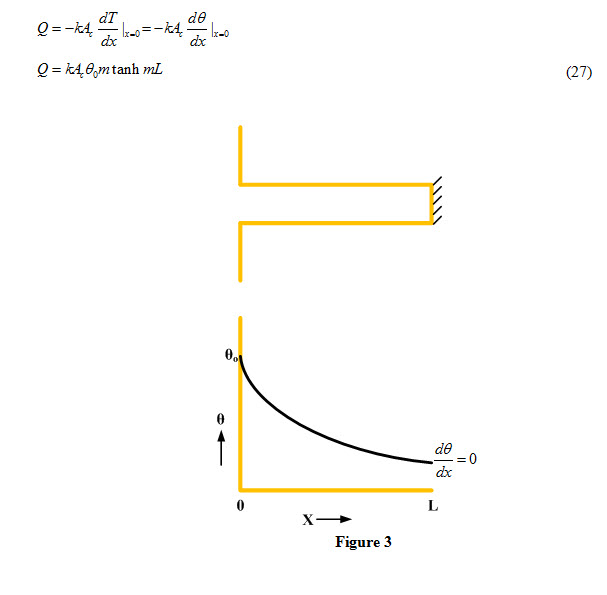Site pages
Current course
Participants
General
Module 1. Basic Concepts, Conductive Heat Transfer...
Module 2. Convection
Module 3. Radiation
Module 4. Heat Exchangers
Module 5. Mass Transfer
Lesson 9. Types of Fins, Fin Applications, Heat Transfer through Fin of uniform cross-section
Special cases
General governing equation for heat transfer from a finned surface is expressed as

Soultion of equation (1) is expressed as
![]()
Using the above two equations, following special cases are considered for heat transfer through a fin of uniform cross section:
1. Fin is losing heat at the tip only
When a fin of finite length loses heat only at its tip as shown in Figure 1, the relevant boundary conditions are
i) At the base of fin, its temperature is equal to the wall temperature. Therefore,
At x = 0; T = T0
T - Ta = T0 - Ta
or θ = θ0 (3)
θ0 represents temperature difference between the fin base and the fluid surrounding the fin.
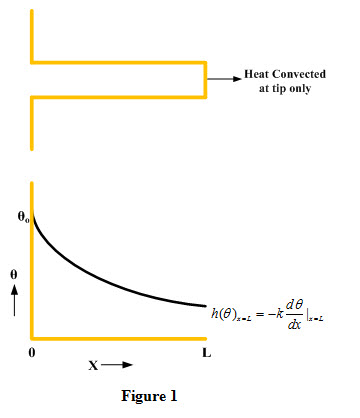
Applying first boundary condition to equation (2), we get
θo = c1 cosh m Χ 0 + c2 sinh m Χ 0
C1 = θo (4)
ii) As fin is losing heat at tip only, it means heat conducted through fin is lost to surrounding fluid by convection at tip. Therefore,
At x = L;
Heat conducted through fin = Heat convected to surrounding fluid by convection

Substituting the value of C1 from equation (4) in equation (2), we get
θ = θo cosh mx + c2 sinh mx (6)
Differentiating equation (6) with respect to x, we get

Substituting value of from equation (6) in equation (5), we get
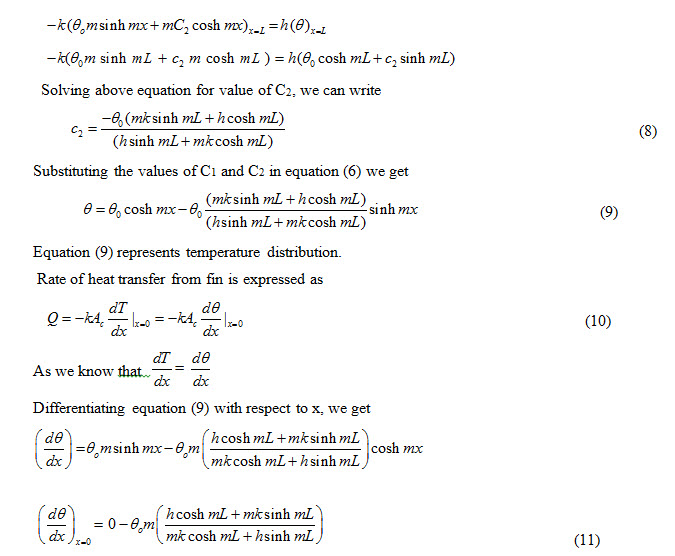
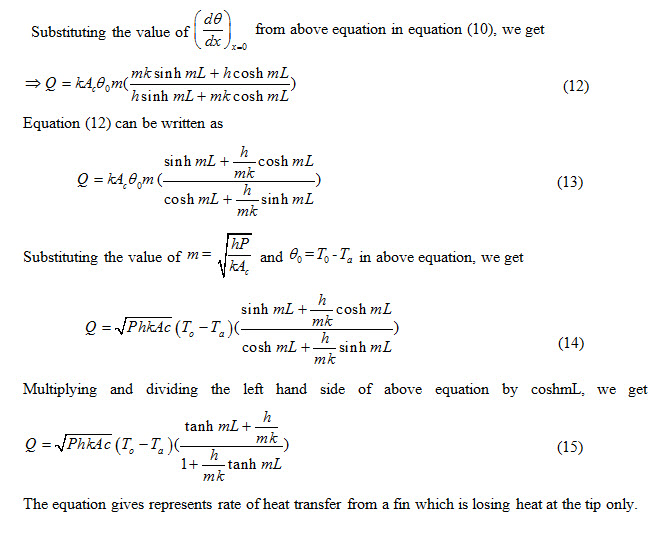
2. Fin is sufficiently long or infinite
For a fin of infinite length as shown in Figure 2, the relevant boundary conditions are:
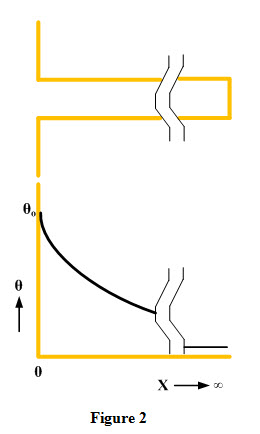
i) At the base of fin, its temperature is equal to the wall temperature. Therefore,
At x = 0; T = T0
T - Ta = T0 - Ta
or θ = θ0 (16)
θo represents temperature difference between the fin base and the fluid surrounding the fin.
ii) For a sufficient or infinitely long fin, temperature at the tip of fin is equal to that of surroundings.
At X=L, θ=0 (17)
Applying the first boundary condition to equation (2), we get
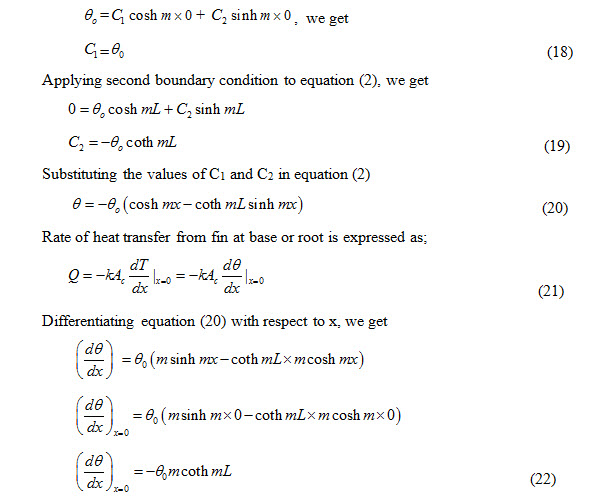

3. Fin is insulated at the tip
For a fin of finite length having its end insulated, no heat transfer takes place from the tip of the fin as shown in Figure 3. The relevant boundary conditions are:

Applying the first boundary conditions to equation (2), we get
c1 = θ0 (24)
Applying second boundary condition to equation (2), we get

c2 = -θ0 tanh mL (25)
Substituting the values of C1 and C2 in equation (2), we get
![]()
Equation (26) represents temperature distribution in a fin having its end insulated.
Rate of heat transfer from fin at base or root is expressed as;
